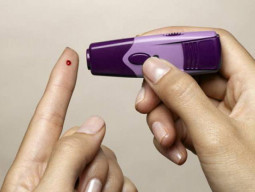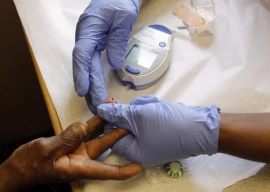
A recent study has revealed that the most effective exercise for managing type-1 diabetes varies by gender. The findings suggest that men benefit most from tailored interval exercises based on their initial blood sugar levels, while women respond well to both interval and continuous exercises. This research underscores the importance of personalised exercise guidelines to prevent hypoglycemia.
Study Background
The research was conducted by the Universidade Federal do Vale do São Francisco in collaboration with Staffordshire University, focusing on optimizing exercise routines for diabetic patients. Dr Pooya Soltani from Staffordshire University highlighted the significance of the study, stating, “This study is important because diabetic patients often lack motivation to exercise as a means of managing their condition. One reason for this is that physical activity can lead to blood sugar drops, causing discomfort and demotivation. We investigated whether the type of physical activity could mitigate these blood sugar drops.”
Research Methodology
The study involved 19 participants with type-1 diabetes who took part in two randomized trials to measure glycemic and cardiovascular responses after interval and continuous exercise. Each participant completed 30 minutes of moderate aerobic exercise on a treadmill. The interval sessions consisted of alternating 1-minute intervals at 40% and 60% of estimated maximal oxygen consumption (VO2max), while the continuous exercise was performed at 50% of VO2max.
Researchers measured heart rate, blood pressure, and blood glucose levels before, immediately after, and 20 minutes post-exercise. They also assessed perceived exertion and enjoyment levels. The study found similar cardiovascular responses and enjoyment levels across genders, but significant differences in blood glucose levels were observed between men and women.
Key Gender Differences
The study revealed that men experienced a higher rate of blood glucose reductions immediately after and 20 minutes post-exercise, particularly following continuous aerobic exercise and interval exercise. Women, however, showed reduced blood glucose levels only after continuous exercise.
Dr Jorge Luiz de Brito-Gomes from Universidade Federal do Vale do São Francisco commented on the findings: “Our study showed that for male patients, interval exercise, such as short bursts of walking, is preferable when starting with low blood sugar levels. Conversely, continuous exercise, like running, is more suitable for those with higher initial blood sugar levels. These approaches can help prevent sudden blood sugar drops."
"For female patients, both interval and continuous aerobic exercise appear to be effective starting points. We hope these findings show that gender-specific recommendations should be considered for aerobic exercise prescription, especially for men with irregular physical activity levels.”
1724302092-0/Taylor-Swift-(3)1724302092-0-405x300.webp)




1721991438-0/BeFunky-collage-(29)1721991438-0-270x192.webp)



1724399654-0/iPhone-16-(1)1724399654-0-270x192.webp)
1719318906-0/BeFunky-collage-(9)1719318906-0-270x192.webp)
















COMMENTS
Comments are moderated and generally will be posted if they are on-topic and not abusive.
For more information, please see our Comments FAQ